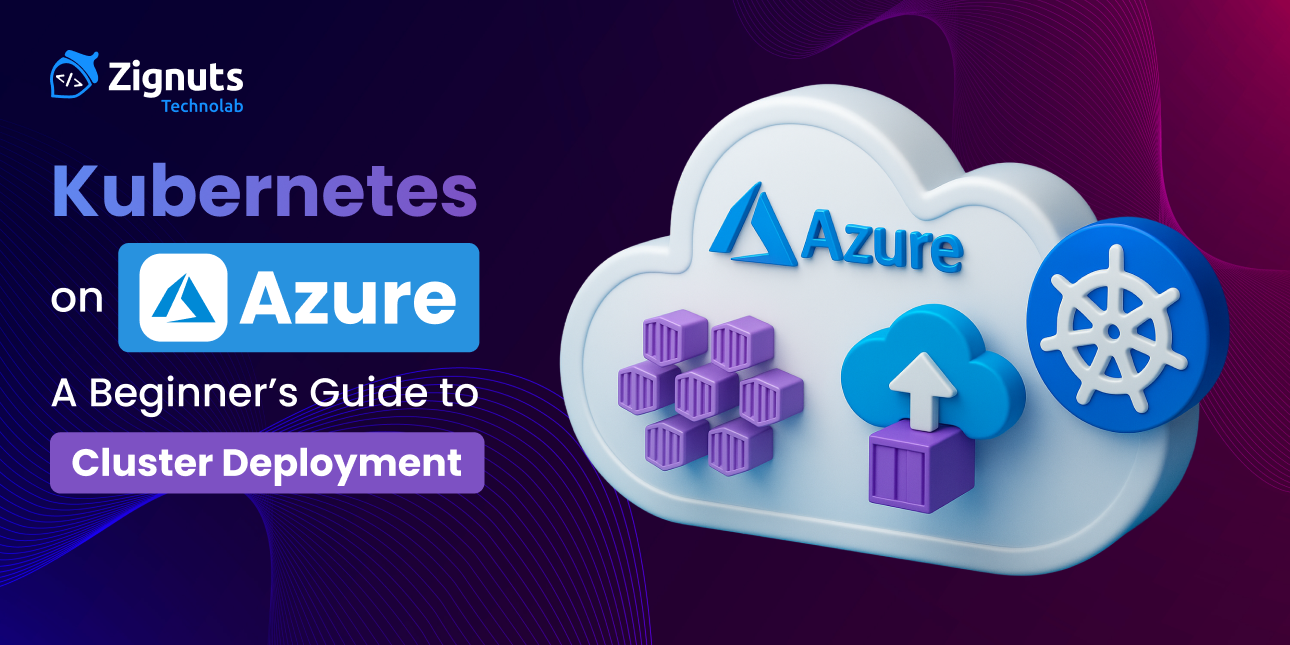Azure Kubernetes Service (AKS) is Microsoft Azure’s managed Kubernetes offering. It provides a fast and easy way to deploy, manage, and scale containerized applications using Kubernetes on the Azure cloud.
In this guide, we’ll walk through setting up an AKS cluster via the Azure Portal (GUI) and also show how to connect using Azure CLI and deploy a simple NGINX app using a LoadBalancer.
Prerequisites to Deploy Kubernetes on Azure
Before you begin:
- Azure account
- Azure Subscription
- Azure CLI (optional for CLI connection)
- Basic familiarity with containers and Kubernetes
Step 1: Install Azure CLI (Optional)
To interact with AKS via CLI:
Install on Linux/macOS:
Install on Windows:
Download from: https://aka.ms/installazurecli
Login:
This will open a browser window for you to sign in.
Step 2: Create an AKS Cluster Using the Azure Portal
- Go to the Azure Portal
URL: https://portal.azure.com - Search for “Kubernetes services” in the top search bar.
- Click + Create → Create Kubernetes Cluster
Cluster Basics
Fill in the following:
- Subscription: Select your Azure subscription (e.g., Microsoft Azure Sponsorship)
- Resource Group: Create new or choose an existing (e.g., defaultresourcegroup-cid)
- Cluster preset configuration: Dev/Test
- Kubernetes Cluster Name: my-aks-cluster
- Region: (US) East US or your preferred region
- Kubernetes version: Leave as default (1.32.5 or latest)
- Availability Zones: None
- Enable Long-Term Support: Off
- Automatic Upgrade: Enabled with patch (recommended)
- Node Security Channel Type: Node Image
- Authentication: Local accounts with Kubernetes RBAC
Click Next: Node pools >
Node Pool Configuration
- Node Pool Name: default
- Node size: Standard_B2s or Standard_DS2_v2
- OS Type: Linux
- Node count: 2
- Enable auto-scaling (Optional but recommended)
- Minimum nodes: 2
- Maximum nodes: 4
Authentication
You can use system-assigned managed identity (recommended).
You can skip RBAC/Active Directory for now if you're just testing.
Networking
- Network configuration: Basic (default)
- DNS prefix: Optional
Advanced networking (Azure CNI) can be enabled later if required.
Review + Create
Once all configurations are done:
- Click Review + Create
- Validate and click Create
It’ll take ~5–10 mins to provision the cluster.
Step 3: Connect to AKS Cluster
After deployment:
- In Azure Portal → Go to your AKS Cluster
- Click "Connect"
Copy the CLI command shown, e.g.:
Now check the connection:
Step 4: Deploy NGINX App to AKS
1. Create a deployment
2. Expose via LoadBalancer
Step 5: Access the NGINX App
Check the service:
You’ll see an EXTERNAL-IP after a few minutes.
Open it in a browser — you should see the NGINX welcome page.
Bonus: Clean Up
To avoid extra billing:
Conclusion
In this guide, you learned how to:
- Deploy an AKS cluster via the Azure Portal
- Connect via Azure CLI
- Deploy and expose an NGINX app using a LoadBalancer




.svg)

.svg)



.svg)

.svg)


.png)





.png)
.png)
.png)
.png)
.png)
.png)
.png)
.png)
.png)



